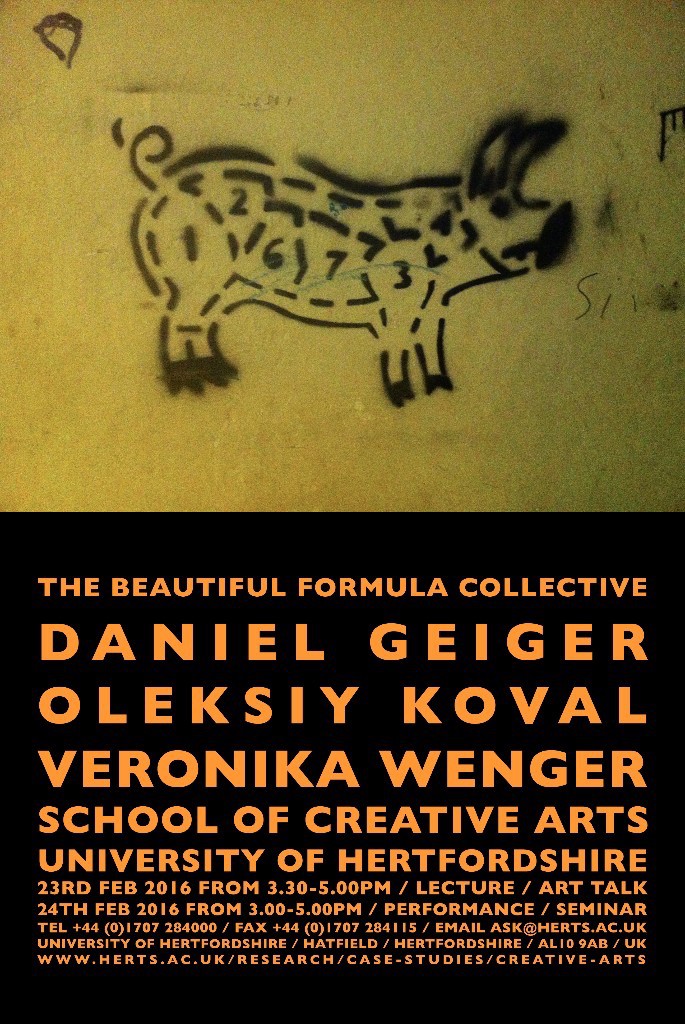An outstanding element of the process of painting is the rhythm in which the fabrication of an art work is accomplished. Rhythmical structures generate the process of painting as a more or less determinated movement in space and time. It gives form to the application of colours on surfaces. The rules of such a shaping, its sequence and number can be set and handled as rhythmical motives like, for example, 2,3,1 or 1,1,2. Here the 1 is to be conceived as a basal unity of movement that can be freely chosen. Surface: To gain certainty in dealing with different tempos while applying colours, the surface is divided in parts through numeric impulses that we call meter (1/4, 1/9, 1/16…).
How can such structures and motives of the process of art be performed and presented in a live environment, in front of the audience? The works to be generated are produced in a set point in time on empty image carriers already at hand. Working on them can be executed both alone as well as in a group. Hereby different rhythmical motives, meters, colours and materials as well as the entry of the persons involved are joined, so as to generate a constant composition, however implemented in a variable way.
